By: Liliya Bondarenko, Alfred Smajlaj, Juhee Thakkar and Paul Chamesian.
Peter Stuyvesant’s pear tree, located on 13th Street & 3rd Avenue in New York City.
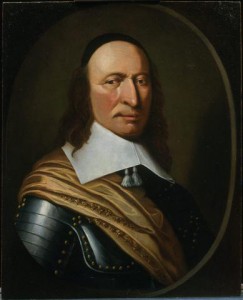
Peter Stuyvesant, the once director-general of New York City, planted this pear tree in order to be remembered by the future inhabitants of the city. The tree grew as New York City did, lasting for almost 200 years. It was fenced in. It was a tree that grew ripe fruit and often bloomed, but unfortunately died after being damaged in a car accident. It is now commemorated with a plaque in the same area that it once grew, and keeps citizens of New York in touch with their Dutch roots.

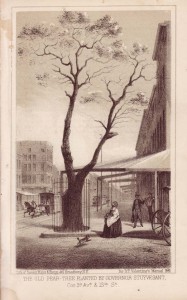
Peter Stuyvesant’s pear tree was located on the corner of 13th Street and 3rd Avenue in New York City, near where he built his home. He was the director-general of the New Netherlands colony from 1647 up to 1664, when the Dutch lost it to the British and New Amsterdam was renamed New York. After losing the colony, Stuyvesant went back to The Netherlands, and when he again returned to New York, he brought a pear tree from his farm with him. The tree flourished, and continued to live while New York grew around it, even being fenced in for protection. Unfortunately, the tree was damaged in a car accident and had to be removed. The story of Stuyvesant’s tree shows how dearly people hold the idea of their past, and demonstrates how important it is to do so. Even in the 1800s, people knew how important it was to hold on to artifacts of the past, and to make sure that even when the physical artifact is gone, something is there to remember it by. This artifact is not expressly related to the history of Rutgers, but it is important for American history in general. It is one of the few links we have to our Dutch ancestry, compared to the many ideas and objects we have connected to our British ancestry. We chose this artifact specifically for that reason – that it is expressly connected to one of the Dutch leaders who helped to colonize and shape New York City.
In September of 1890, the Holland Society of New York placed a plaque on the same corner that the tree once lived, in order to keep the memory of New York’s D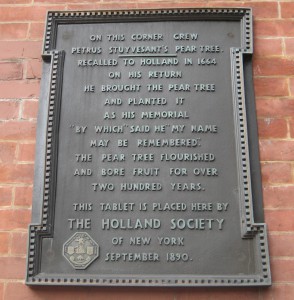 utch ancestry alive.
utch ancestry alive.
In 2003, a new tree was planted in the same spot as the original, in the hopes of it lasting for the same amount of times as the previous one.
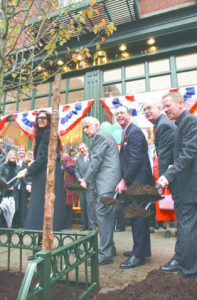
A view of 13th and 3rd today. If you look closely you can see the plaque on the buildin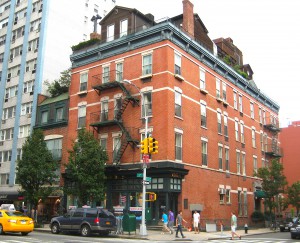 g.
g.
Sources:
http://thevillager.com/villager_29/stuyvensantspeartree.html
https://ephemeralnewyork.wordpress.com/2011/08/29/east-13th-streets-most-famous-downed-tree/
http://kottke.org/09/01/peter-stuyvesants-pear-tree
